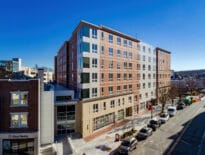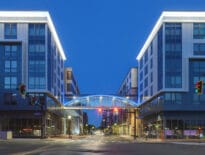
The number of towns with a median single-family home sale price of $1 million or more leapt from five to 18 over the last eight years, and could grow even more in 2021.
The median home price has shot past the $1 mark million in over a dozen tony suburbs and coveted urban enclaves across Massachusetts.
That’s a nearly fourfold increase over the past eight years. And it is yet another sign as well that housing affordability in our state is going from bad to worse.
Back in 2012, there were just five places in the state with median prices in the seven figures according to The Warren Group, publisher of Banker & Tradesman: the toniest parts of Boston, Brookline, Weston, Chilmark, and Nantucket.
Downtown Boston – a catchall for the South End, Back Bay and Beacon Hill – ruled the roost with a median price of $1.8 million, with the other four, including Brookline and Weston, all at $1.2 or $1.1 million.
Today, there are 18 million-dollar suburbs and towns, from Nantucket to Lincoln, per The Warren Group’s tally of all 2020’s single-family home sales.
And as prices soar amid a pandemic-driven surge in home buying, several more poised to join this exclusive club.
Buyers in the professional and executive classes, able to work remotely and paid handsomely for it, have led the charge.
“The booming stock market is really what is driving the high end and throwing gasoline on the fire, and the extreme case of cabin fever as well,” said Elaine Bannigan, owner of Wellesley’s Pinnacle Residential Properties. “Suddenly, everyone wants more space and more yard.”
More on the Way
Driven by their proximity to the booming tech and life-sciences hubs of Cambridge and the Route 128 corridor and a dearth of new home construction within their borders, Boston’s western suburbs now dominate the list of million-dollar communities.
Eight suburbs in MetroWest joined the seven-figure club in the 2010s: Newton, Belmont, Dover, Needham, Wellesley, Lincoln, Lexington and Concord.
Cambridge itself joined the million-dollar club as well, with the median single-family home costing more than $1.6 million, having jumped by more than 10 percent last year.
There are also now million-dollar suburbs both on both to the north of Boston and on the South Shore – something that wasn’t the case nearly a decade ago.
Cohasset just broke the million-dollar mark after a nearly 12 percent surge in 2020, while Winchester now has a median price of $1.25 million.
Now the expanse of Boston-area real estate where only the very wealthy need apply – or more accurately, submit a bid – is poised for another big expansion.
We head into 2021 on the heels of an 11.4 percent increase statewide over the last year, which pushed the median price to $445,500 in 2020.
Another 13 suburbs and fast-gentrifying city neighborhoods are poised to join the million-dollar club over the next year or two.
Arlington and Somerville in the inner urban ring, as well as suburbs like Hingham, Medfield, Westwood, Sherborn and Manchester are all on deck, so to speak, with median year-to-date single-family sale prices of $800,000 to $925,000 range.
So are once solidly working-class neighborhoods in Boston like Allston, Jamaica Plain and South Boston.
All it would take is a repeat of 2020’s big jump, or even a couple years where prices rise in the 5 to 6 percent range, to push the price of a single-family home in these towns and neighborhoods past $1 million.
A Sign of Inequality
Still, while COVID-19 cabin fever has certainly been a driver over the past year, the million-dollar house club was growing before the pandemic and will keep on expanding long after it’s gone.
Other, longer-term factors are playing an equal, if not even more important, role, not just in pushing up prices overall, but in transforming a growing number of suburbs and neighborhoods into preserves for the wealthiest few.
Home building in Massachusetts remains mired in a long-term slump, with construction of new homes having taken another dive in the 2010s, stifled by NIMBY attitudes and onerous local zoning regulations.
Not surprisingly, the only new home construction still taking place in many of these million-dollar communities involves teardown of older homes, with few if any new subdivisions built.
Yet even as supply plunges, demand is surging.
Millennials – not long ago pegged in the media of rebellious members of a mythical Renter Nation – are now entering into their prime, home-buying years with a vengeance, Pinnacle’s Bannigan noted.
“Buyers are hot to go,” she said. “Millennials are reaching their peak buying years and COVID lit a fire [under them].”

Scott Van Voorhis
If you own a home in one of these towns, then cheers.
But the growing number of million-dollar suburbs is hardly a sign of health, or of a “hot” market, to use one of the most overused word in real estate. Instead, it’s a mark of growing inequality in the housing market and society as whole.
Boom times or bust, Boston area’s richest suburbs and tony urban enclaves just keep getting richer.
And if you are worried about the stability of our society – and after the events of the past few weeks, who isn’t – it’s a trend that should be viewed with a very wary eye.
Scott Van Voorhis is Banker & Tradesman’s columnist; opinions expressed are his own. He may be reached at sbvanvoorhis@hotmail.com.






